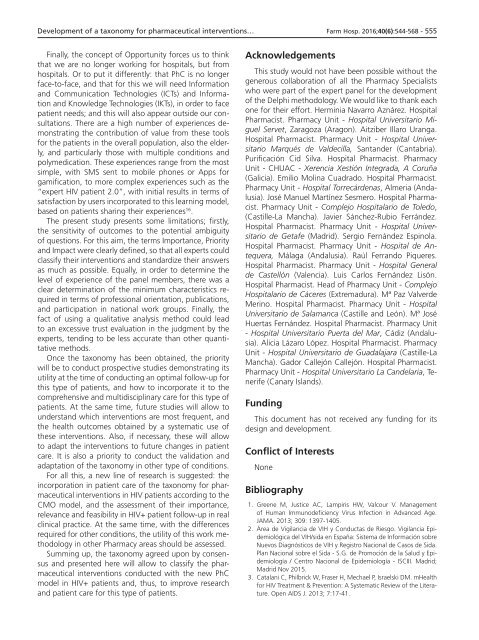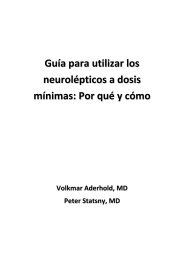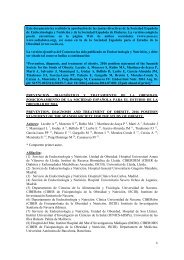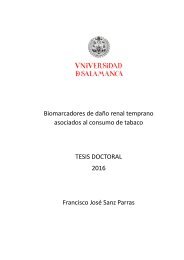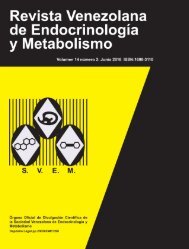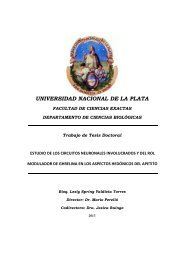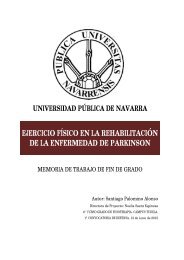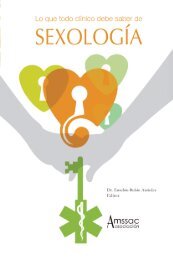Noviembre-Diciembre
156_v40n6(1)
156_v40n6(1)
Create successful ePaper yourself
Turn your PDF publications into a flip-book with our unique Google optimized e-Paper software.
Development of a taxonomy for pharmaceutical interventions… Farm Hosp. 2016;40(6):544-568 - 555<br />
Finally, the concept of Opportunity forces us to think<br />
that we are no longer working for hospitals, but from<br />
hospitals. Or to put it differently: that PhC is no longer<br />
face-to-face, and that for this we will need Information<br />
and Communication Technologies (ICTs) and Information<br />
and Knowledge Technologies (IKTs), in order to face<br />
patient needs; and this will also appear outside our consultations.<br />
There are a high number of experiences demonstrating<br />
the contribution of value from these tools<br />
for the patients in the overall population, also the elderly,<br />
and particularly those with multiple conditions and<br />
polymedication. These experiences range from the most<br />
simple, with SMS sent to mobile phones or Apps for<br />
gamification, to more complex experiences such as the<br />
“expert HIV patient 2.0”, with initial results in terms of<br />
satisfaction by users incorporated to this learning model,<br />
based on patients sharing their experiences 16 .<br />
The present study presents some limitations; firstly,<br />
the sensitivity of outcomes to the potential ambiguity<br />
of questions. For this aim, the terms Importance, Priority<br />
and Impact were clearly defined, so that all experts could<br />
classify their interventions and standardize their answers<br />
as much as possible. Equally, in order to determine the<br />
level of experience of the panel members, there was a<br />
clear determination of the minimum characteristics required<br />
in terms of professional orientation, publications,<br />
and participation in national work groups. Finally, the<br />
fact of using a qualitative analysis method could lead<br />
to an excessive trust evaluation in the judgment by the<br />
experts, tending to be less accurate than other quantitative<br />
methods.<br />
Once the taxonomy has been obtained, the priority<br />
will be to conduct prospective studies demonstrating its<br />
utility at the time of conducting an optimal follow-up for<br />
this type of patients, and how to incorporate it to the<br />
comprehensive and multidisciplinary care for this type of<br />
patients. At the same time, future studies will allow to<br />
understand which interventions are most frequent, and<br />
the health outcomes obtained by a systematic use of<br />
these interventions. Also, if necessary, these will allow<br />
to adapt the interventions to future changes in patient<br />
care. It is also a priority to conduct the validation and<br />
adaptation of the taxonomy in other type of conditions.<br />
For all this, a new line of research is suggested: the<br />
incorporation in patient care of the taxonomy for pharmaceutical<br />
interventions in HIV patients according to the<br />
CMO model, and the assessment of their importance,<br />
relevance and feasibility in HIV+ patient follow-up in real<br />
clinical practice. At the same time, with the differences<br />
required for other conditions, the utility of this work methodology<br />
in other Pharmacy areas should be assessed.<br />
Summing up, the taxonomy agreed upon by consensus<br />
and presented here will allow to classify the pharmaceutical<br />
interventions conducted with the new PhC<br />
model in HIV+ patients and, thus, to improve research<br />
and patient care for this type of patients.<br />
Acknowledgements<br />
This study would not have been possible without the<br />
generous collaboration of all the Pharmacy Specialists<br />
who were part of the expert panel for the development<br />
of the Delphi methodology. We would like to thank each<br />
one for their effort. Herminia Navarro Aznárez. Hospital<br />
Pharmacist. Pharmacy Unit - Hospital Universitario Miguel<br />
Servet, Zaragoza (Aragon). Aitziber Illaro Uranga.<br />
Hospital Pharmacist. Pharmacy Unit - Hospital Universitario<br />
Marqués de Valdecilla, Santander (Cantabria).<br />
Purificación Cid Silva. Hospital Pharmacist. Pharmacy<br />
Unit - CHUAC - Xerencia Xestión Integrada, A Coruña<br />
(Galicia). Emilio Molina Cuadrado. Hospital Pharmacist.<br />
Pharmacy Unit - Hospital Torrecárdenas, Almeria (Andalusia).<br />
José Manuel Martínez Sesmero. Hospital Pharmacist.<br />
Pharmacy Unit - Complejo Hospitalario de Toledo,<br />
(Castille-La Mancha). Javier Sánchez-Rubio Ferrández.<br />
Hospital Pharmacist. Pharmacy Unit - Hospital Universitario<br />
de Getafe (Madrid). Sergio Fernández Espinola.<br />
Hospital Pharmacist. Pharmacy Unit - Hospital de Antequera,<br />
Málaga (Andalusia). Raúl Ferrando Piqueres.<br />
Hospital Pharmacist. Pharmacy Unit - Hospital General<br />
de Castellón (Valencia). Luis Carlos Fernández Lisón.<br />
Hospital Pharmacist. Head of Pharmacy Unit - Complejo<br />
Hospitalario de Cáceres (Extremadura). Mª Paz Valverde<br />
Merino. Hospital Pharmacist. Pharmacy Unit - Hospital<br />
Universitario de Salamanca (Castille and León). Mª José<br />
Huertas Fernández. Hospital Pharmacist. Pharmacy Unit<br />
- Hospital Universitario Puerta del Mar, Cádiz (Andalusia).<br />
Alicia Lázaro López. Hospital Pharmacist. Pharmacy<br />
Unit - Hospital Universitario de Guadalajara (Castille-La<br />
Mancha). Gador Callejón Callejón. Hospital Pharmacist.<br />
Pharmacy Unit - Hospital Universitario La Candelaria, Tenerife<br />
(Canary Islands).<br />
Funding<br />
This document has not received any funding for its<br />
design and development.<br />
Conflict of Interests<br />
None<br />
Bibliography<br />
1. Greene M, Justice AC, Lampiris HW, Valcour V. Management<br />
of Human Immunodeficiency Virus Infection in Advanced Age.<br />
JAMA. 2013; 309: 1397-1405.<br />
2. Área de Vigilancia de VIH y Conductas de Riesgo. Vigilancia Epidemiológica<br />
del VIH/sida en España: Sistema de Información sobre<br />
Nuevos Diagnósticos de VIH y Registro Nacional de Casos de Sida.<br />
Plan Nacional sobre el Sida - S.G. de Promoción de la Salud y Epidemiología<br />
/ Centro Nacional de Epidemiología - ISCIII. Madrid;<br />
Madrid Nov 2015.<br />
3. Catalani C, Philbrick W, Fraser H, Mechael P, Israelski DM. mHealth<br />
for HIV Treatment & Prevention: A Systematic Review of the Literature.<br />
Open AIDS J. 2013; 7:17-41.


